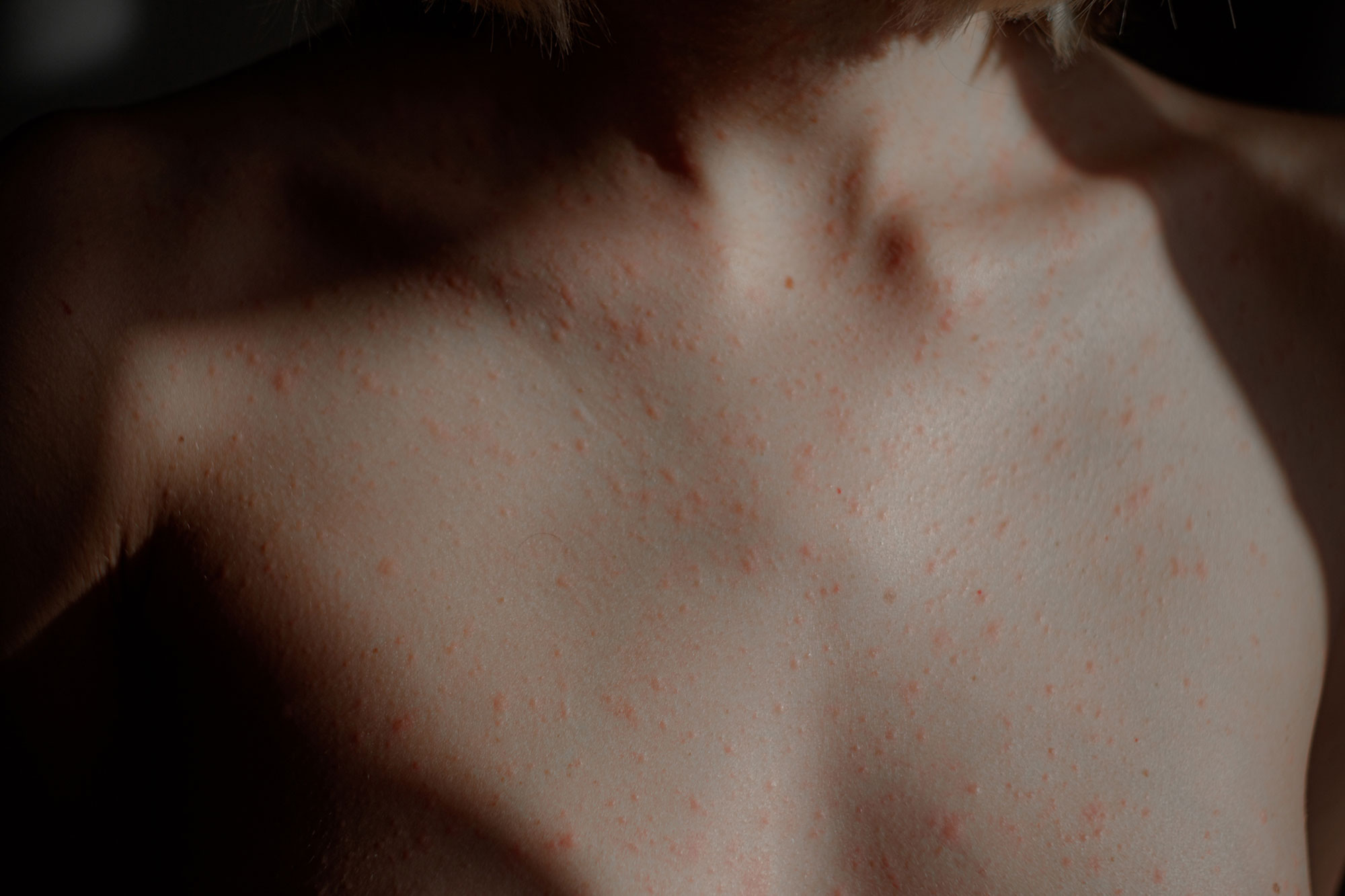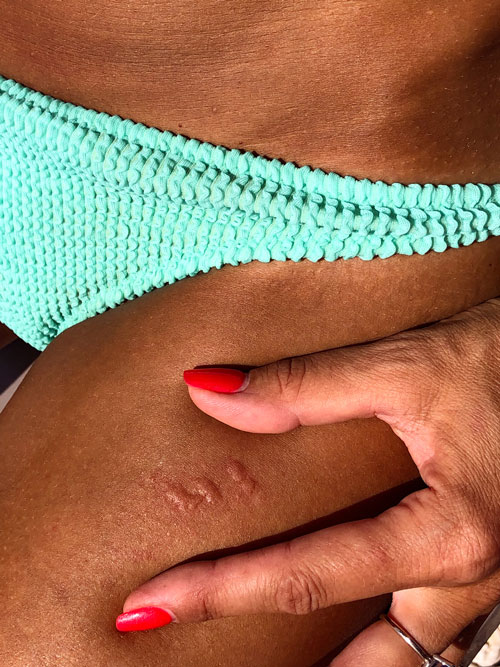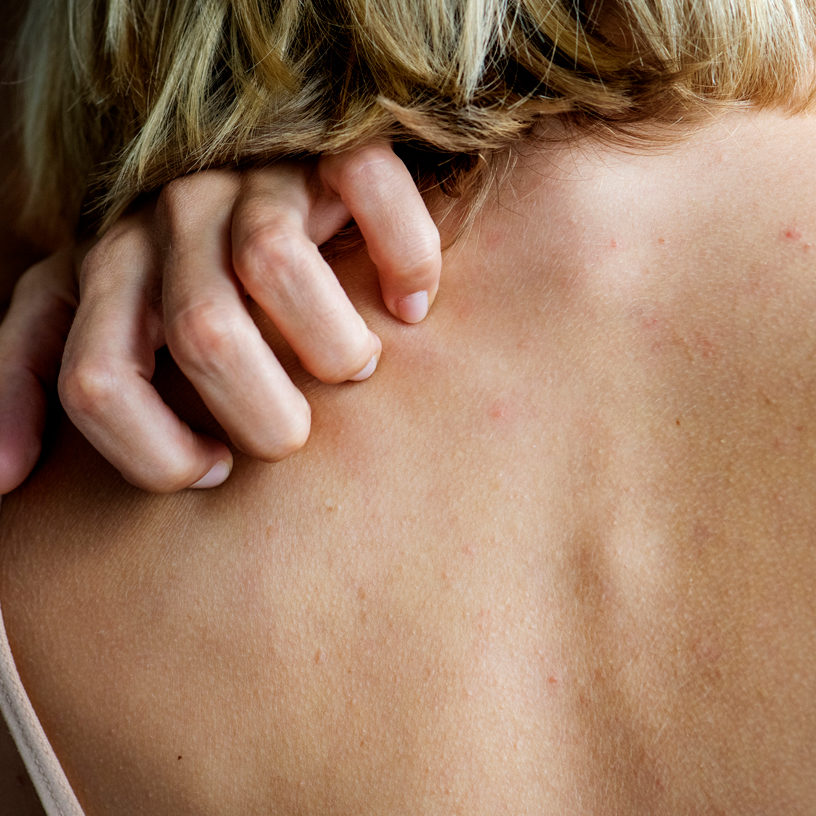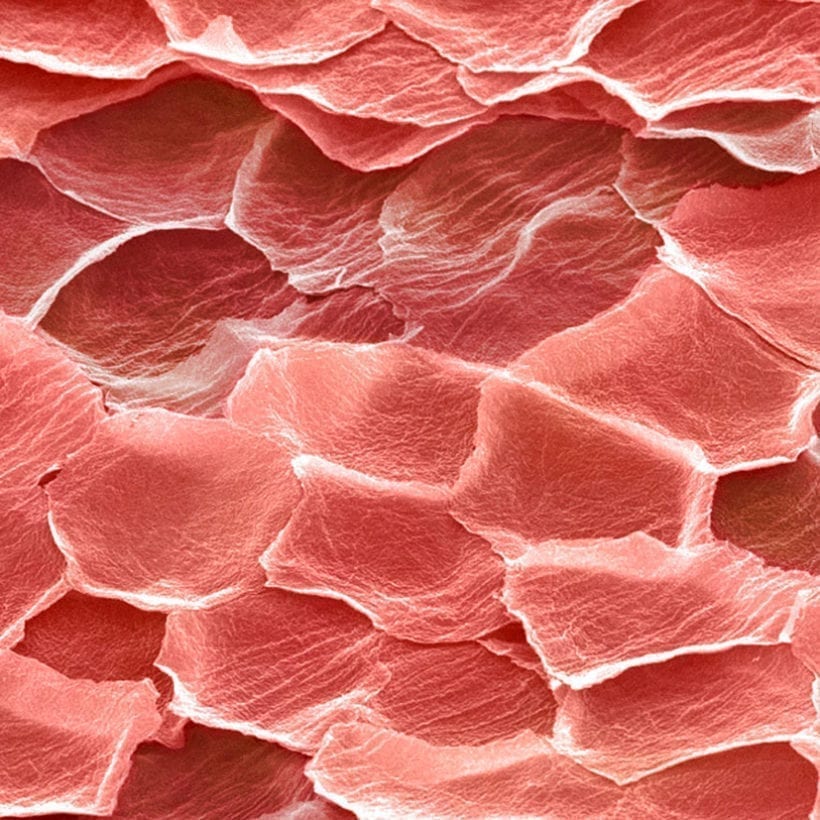Beach days, pool hangs, outdoor BBQs. We welcome the summertime heat in many ways… but not the heat rash. If you are affected by this pesky skin issue that pops up, especially during the warmer summer months, then you are not alone. Research shows that over 30% of adults in humid climates suffer from heat rash. It even affects our littlest humans, with up to nine percent of newborns also experiencing it. This rash, often characterized by tiny, itchy red or flesh-colored bumps, is very common and can affect people of all ages.
Rebecca Marcus, MD
is a board-certified dermatologist.
Andrei Gherghina, DO, MS
is a dermatologist & Mohs surgeon at Oceans Dermatology.
Viktoryia Kazlouskaya, MD, PhD
is a board-certified dermatologist practicing at the University of Pittsburgh.
Meet the Experts

While the name of the condition seems pretty straightforward and is apparently exacerbated by heat, what else do we need to know, and is it preventable?
What is heat rash and why does it happen?
Heat rash, often called prickly heat, sweat rash, or miliaria, is caused when sweat glands become blocked. “Heat rash occurs when the sweat gland becomes blocked and inflamed,” says board-certified dermatologist Rebecca Marcus, MD. Marcus explains that it often occurs to people in hot, humid environments or when someone sweats from exercise or has a fever. According to studies, heat rash usually appears in skin folds, elbow creases, armpits, and wherever clothing rubs against the skin.
Although it can affect people of all ages, babies are especially susceptible. “Babies tend to get heat rash because their sweat glands are not mature and can become clogged and inflamed more easily,” she adds. It also happens more in young babies because they cannot communicate when they may be overheating. “Heat rashes can be seen more often in infants as they are dressed by their parents and are unable to communicate when they feel too hot,” adds Andrei Gherghina, DO, MS, dermatologist and Mohs surgeon at Oceans Dermatology.
Physically active people, such as athletes or people on bed rest, are also at risk of developing heat rash.
Different subtypes
Viktoryia Kazlouskaya, a board-certified dermatologist practicing at the University of Pittsburgh, explains that there are a few different types of rashes caused by the heat:
- Miliaria Crystallina: This is the mildest form and occurs when sweat duct openings on the skin’s surface become blocked. “Miliaria crystallina presents as small scattered fluid filled vesicles,” explains Kazlouskaya.
- Miliaria Rubra: This rash, known medically as miliaria rubra, occurs deeper within the skin compared to miliaria crystallina. “This rash is caused by the obstruction of the sweat ducts and presents as itchy red bumps,” adds Kazlouskaya.
- Miliaria Pustulosa: Kazlouskaya explains that miliaria pustulosa happens when lesions get infected. This rash may have pus-filled pustules.
- Miliaria Profunda: This is the least popular form, but perhaps the most serious. “Miliaria profunda happens because of the deeper obstruction of the sweat duct and is featured with deeper skin colored bumps,” Kazlouskaya shares.
How long does it last?
Although heat rash can be annoying, the good news is that it doesn’t usually stick around for long. “The rash should improve in a few days on its own,” Kazlouskaya advises. But, if you have concerns that your heat rash got infected (say, from scratching), reach out to your medical provider on next steps.
How it can be prevented
Heat rash can be a nuisance, but there are certain measures you can take to prevent it. This could be as easy as switching up your clothing or paying more attention to the temperature inside and outside your home. Marcus suggests doing the below to help prevent heat rash from forming:

- Avoid tight or restrictive clothing
- Opt for breathable fabrics; cotton and linen are especially airy
- Avoid irritants to the skin, such as harsh soaps and fragranced products
- Avoid overheating by limiting time outside during high temperatures
- Make an effort to spend time in an air-conditioned environment on particularly hot days
- Make sure to sleep in a cool room
Treatment options
To help the rash clear up faster, Kazlouskaya suggests wearing loose-fitting clothing, staying out of the heat, and using mild steroid creams to help manage itching. ”Other remedies may include calming lotions with menthol,” she adds. Gherghina recommends applying a cool compress to the affected area to reduce itching, taking oatmeal baths to calm and soothe skin, and using calamine lotion. Topical steroids may occasionally be used to treat more intense cases so that inflammation can be reduced, says Gherghina.
We only recommend products we have independently researched, tested, and loved. If you purchase a product found through our links, Sunday Edit may earn an affiliate commission.








